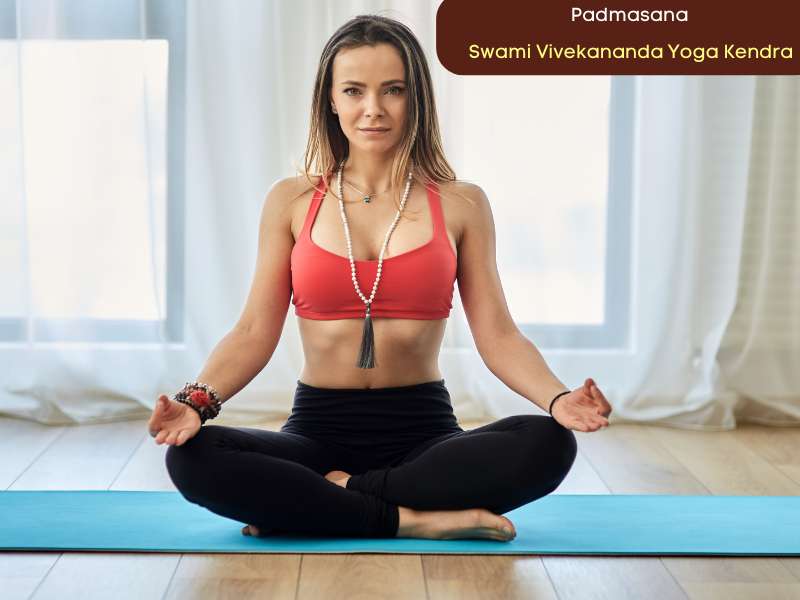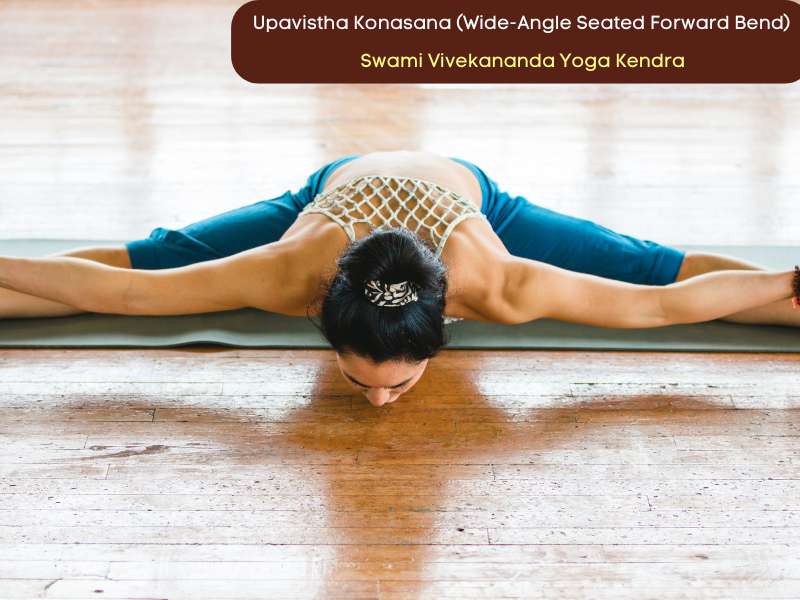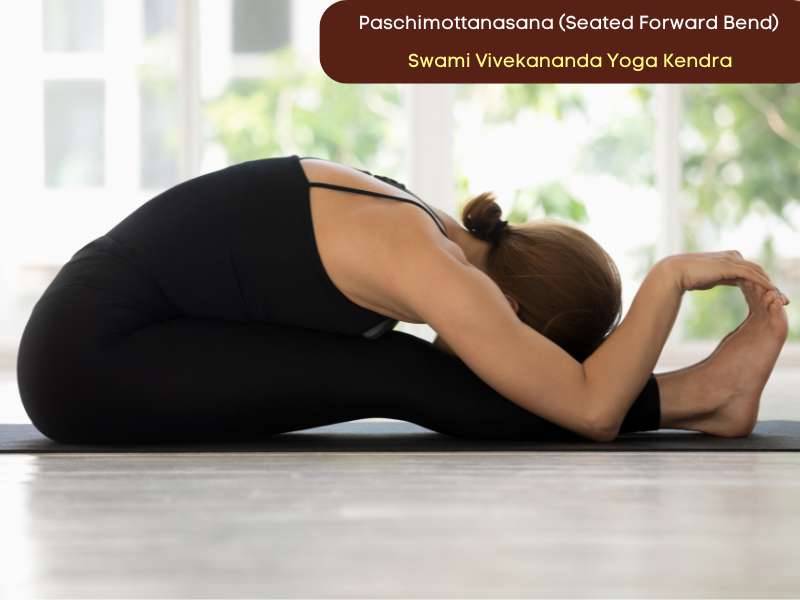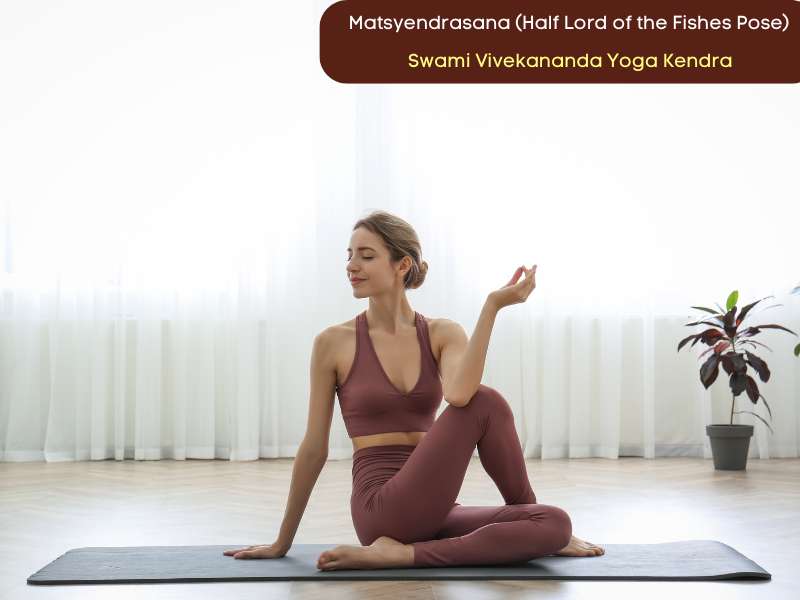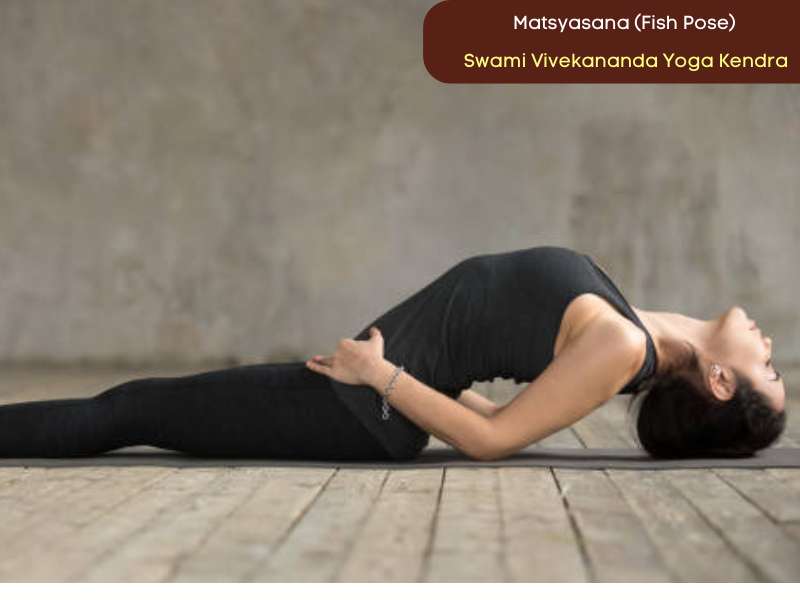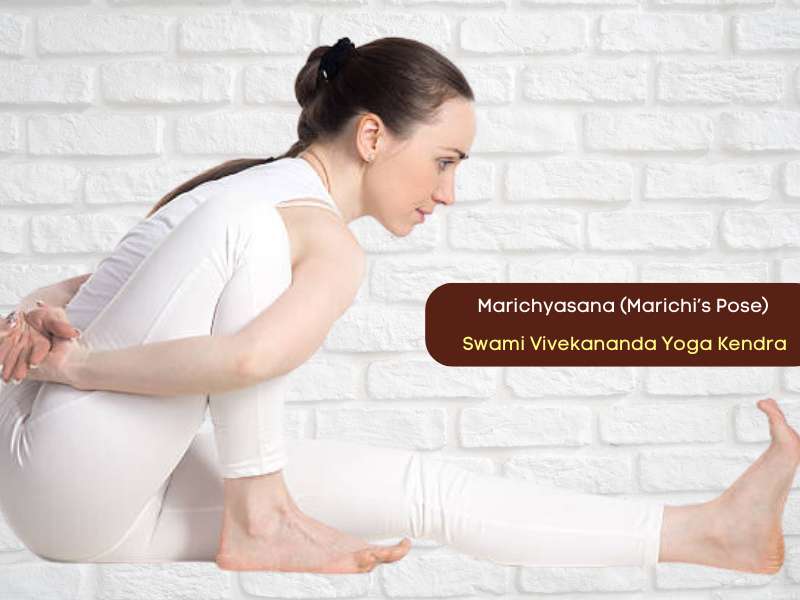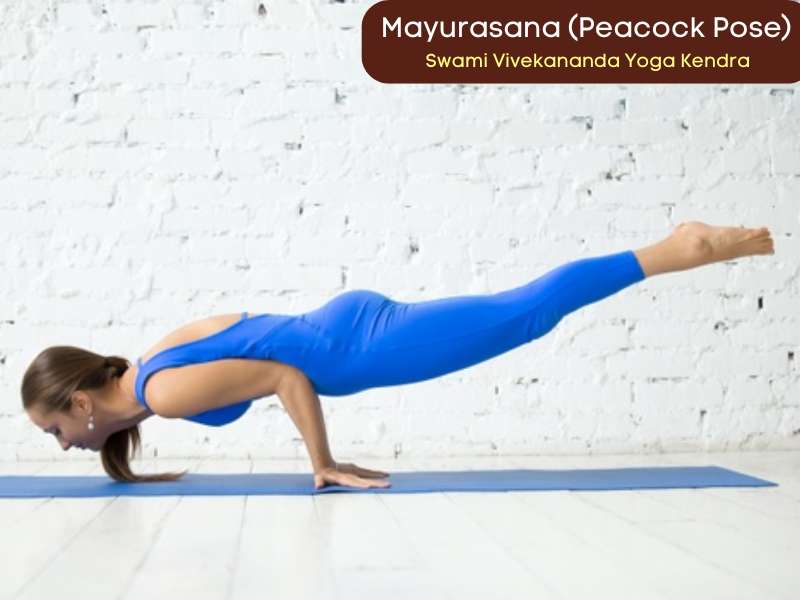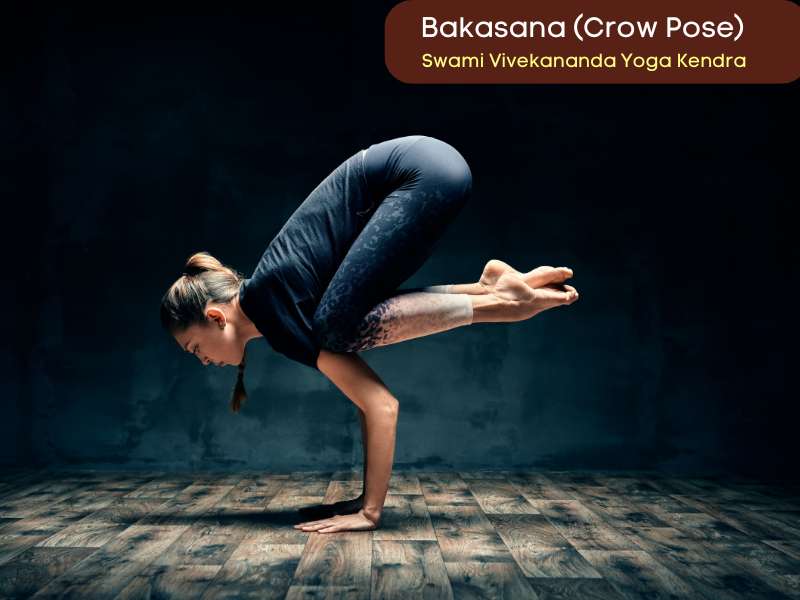Have you ever noticed how ancient yogis are often depicted sitting cross-legged in deep meditation? That’s Padmasana, or the Lotus Pose—one of the most iconic and powerful seated postures in yoga. It’s not just a visually striking pose; it carries deep benefits for the mind and body. Padmasana is widely practiced for meditation, pranayama, and mindfulness. This pose helps calm the mind, strengthen the spine, and improve flexibility. Whether you’re looking to enhance your meditation practice or improve your posture, this asana can be a game-changer. In this blog, we will explore how to perform Padmasana, its benefits, and answer some common questions.
Welcome to Swami Vivekananda Yoga Kendra! Today, we’re diving into a wonderfully calming and rejuvenating yoga pose: Supta Baddha Konasana, or the Reclining Bound Angle Pose. This relaxing posture is perfect for unwinding your body, calming your mind, and opening up your hips. Whether you’re new to yoga or a seasoned practitioner, this pose is a gentle yet powerful way to reconnect with yourself. Let’s walk through how to practice it, explore its benefits, and discover why it’s a must-have in your yoga routine.
If you’ve been searching for a yoga pose that combines physical flexibility with mental clarity, look no further than Upavistha Konasana, or the Wide-Angle Seated Forward Bend. This pose is a beautiful way to open up the body and calm the mind. Whether you’re looking to stretch your inner thighs, release tension in your back, or simply find a moment of stillness in your day, Upavistha Konasana is a pose worth embracing. It’s accessible to practitioners of all levels and offers a host of benefits that extend far beyond the mat.
At Swami Vivekananda Yoga Kendra, we understand that yoga is more than just physical movement—it’s a way to bring balance to the mind, body, and spirit. One of the most grounding and therapeutic poses in yoga is Paschimottanasana (Seated Forward Bend). This forward-folding posture not only stretches your body but also soothes your mind, helping you feel calm and centered. Whether you’re seeking to improve flexibility, ease tension, or simply unwind, Paschimottanasana is a beautiful pose that offers a wide range of benefits for yogis of all levels. Let’s explore this powerful pose and discover how it can enhance your yoga journey!
At Swami Vivekananda Yoga Kendra, we see yoga as a beautiful journey that brings harmony to your body, mind, and soul. One pose that truly embodies this balance is Ardha Matsyendrasana, or the Half Lord of the Fishes Pose. Named after the wise sage Matsyendranath, this seated twist is not just about flexibility—it helps detoxify your body, improve spinal health, and enhance your overall well-being.
Yoga is all about creating balance—physically, mentally, and emotionally. One pose that beautifully embodies this balance is Matsyasana (Fish Pose). Known as a heart-opening posture, Matsyasana stretches your chest, shoulders, and neck while promoting relaxation and deep breathing.The name “Matsyasana” comes from the Sanskrit word Matsya, meaning fish. It’s said that practicing this pose can help you float like a fish through the currents of life, with ease and calmness. Whether you’re looking to improve your posture, release tension, or just feel more centered, this pose has something for everyone.In this blog, we’ll explore how to practice Matsyasana step by step, dive into its incredible benefits, and answer common questions to help you get the most out of this rejuvenating asana. Let’s get started!
Have you ever felt the need to stretch your spine, ease tension in your body, or simply take a moment to unwind? Marichyasana (Marichi’s Pose) could be the perfect addition to your yoga routine! Named after the sage Marichi, this pose is a beautiful blend of a seated twist and a stretch that offers physical and mental benefits. Marichyasana isn’t just about flexibility—it’s also about nurturing your digestion, releasing stored tension in your hips, and promoting mindfulness. Whether you’re new to yoga or an experienced practitioner, this pose can be adapted to suit your needs and abilities. Ready to twist, stretch, and feel amazing? Let’s explore everything about Marichyasana together!
Have you ever wanted to build strength, balance, and focus all in one go? Enter Navasana (Boat Pose)—a fantastic yoga pose that works your core, tones your body, and sharpens your mind. Named after the shape of a boat, this asana helps you stay steady and strong, just like a boat gliding through water. While it may look simple, it’s a powerhouse pose that challenges your muscles and concentration. Whether you’re a yoga beginner or a seasoned practitioner, Navasana is a great addition to your practice to help you feel more confident and energized. Ready to set sail into the world of Navasana? Let’s dive in!
Have you ever watched a peacock and marveled at its grace and strength? In yoga, Mayurasana (Peacock Pose) draws inspiration from this majestic bird, combining balance, elegance, and inner power. This advanced pose may look intimidating at first, but it’s a beautiful reminder of what we’re capable of when we focus our mind and body. Known for its incredible benefits like improved digestion, core strength, and detoxification, Mayurasana is more than just a pose—it’s a journey of resilience and self-discovery. Let’s dive in to learn how to master it step by step, explore its amazing benefits, and answer your burning questions!
If you’ve ever seen someone gracefully balancing on their hands in yoga, you might have witnessed Bakasana, also known as Crow Pose. This arm balance is not only an impressive display of strength and balance, but it also offers a wonderful challenge for anyone looking to deepen their yoga practice. Whether you’re new to yoga or an experienced practitioner, Bakasana helps you build strength in your arms, shoulders, and core, while also teaching you how to focus your mind and push past your fears.

